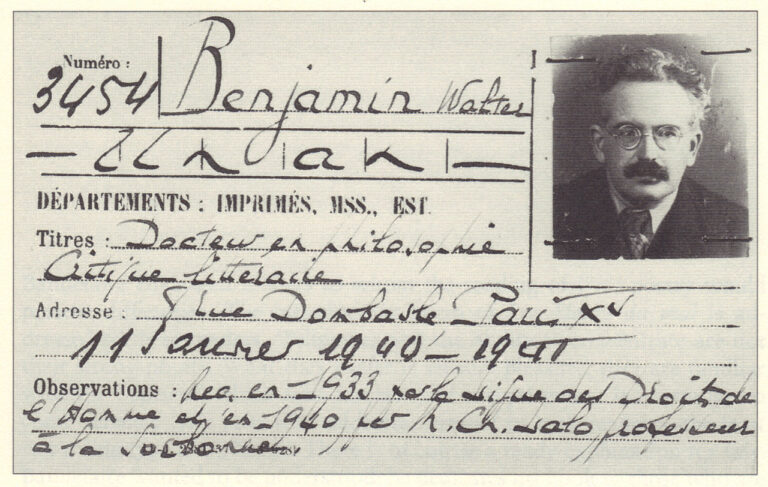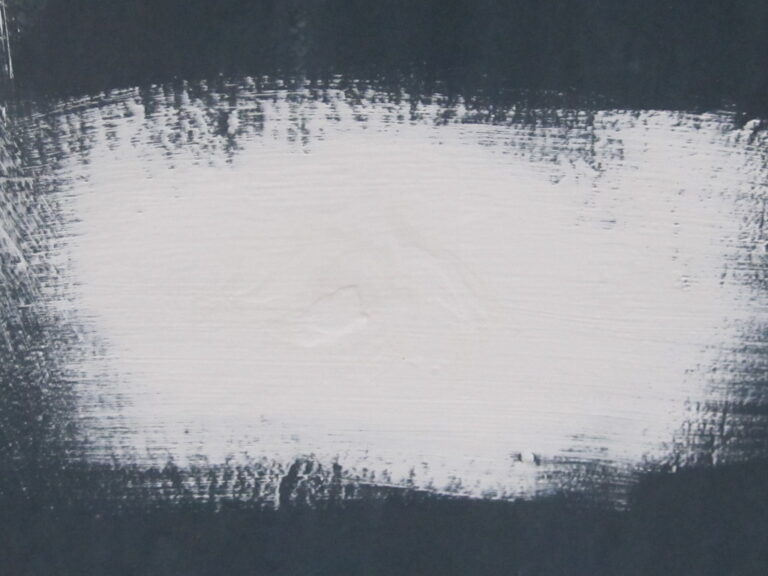This article examines how discourses of waste and wastefulness are applied to the bodies of border crossers and border dwellers along the US-Mexico border. Using Josh Begley’s 2016 digital memorial “Fatal Migrations” alongside the fourth section of Roberto Bolaño’s 2666, I examine how the matter of bodies plays an essential role in border policing. Forced into isolated and environmentally hostile areas, migrants are only visible through discarded objects, left behind during border crossing. As a result, American policy and discourse is able to associate migrant bodies with the trash they leave behind—effectively reducing migrant bodies to disgusting and ecologically dangerous. I look at “Fatal Migrations” to consider how the landscape is deployed against migrants and the vibrancy of their bodies after death. This reading leads to a consideration of waste across the border as seen in the fourth section of Roberto Bolaño’s 2666, “The Part about the Crimes.” A fictionalized representation of the feminicides in Ciudad Juarez, Bolaño’s narrative shows the reduction of women’s bodies to capitalistic waste. Taken together the two pieces illustrate the dismissal of bodies to waste and wasteful under overlapping immigration and economic policies. Moreover, both pieces show how death in the borderlands is central to American understandings of sovereignty. The result is increasingly militarized environments and solidified borders in the form of physical structures, cultural attitudes, and policy.
Issues
How to Do Things with Walter Benjamin
Walter Benjamin is now a common reference point within cultural studies. But while a considerable secondary literature has emerged around his work, efforts to build upon his contributions by operationalizing the method they elaborate have remained relatively rare. Nevertheless, I maintain that it is solely through such operationalization that Benjamin’s intellectual project can truly be understood. In this article, I provide a sketch of Benjamin’s intellectual biography—with particular emphasis given to the purported tension between his metaphysics and his materialism—to highlight the overarching methodological coherence of his approach. In conclusion, I demonstrate how this method might be operationalized by cultural studies scholars today.
From Gwangju to Brixton: The Impossible Translation of Han Kang’s Human Acts
This article theorizes the relationship between trauma and translation through a close reading of Han Kang’s Human Acts (2016) and its complex narrating of the Gwangju Democratization Movement of 1980. I engage with the novel through scholarship on state-sanctioned violence, the politics of memory and Korean and Black literary and cultural studies. I do this to consider how the massacre of Gwangu’s residents by their own government is made possible by earlier histories of occupation and imperial violence in the Korean peninsula. I then turn to the Korean edition of the novel to address what emerges outside of the English translation. Here, I rely on my own language skills to read, translate and direct attention to what is lost in Deborah Smith’s published translation of Han’s novel. Specifically, I argue that Smith’s version of Human Acts actively works against Han’s subversive articulation of the elusiveness of subjectivity, the rending of the world vis-à-vis violence, the possibilities afforded by opacity and the dilemma of what it means to write about “one’s own” historical trauma. In an attempt to reflect critically on what it might mean to live in the ongoing ripples of such traumas, I offer a text that blurs autobiography, travel writing, Black Studies, and literary analysis, crafting something that may be situated under the aegis of cultural studies and alongside what Gloria Anzaldúa names an autohistoria-teoría and what Crystal Baik calls a diasporic memory work.
Cultural Studies in the Interregnum
This issue of Lateral contributes to a number of ongoing questions and conversations. In it, we see a range of methodologies that span particular sites, take up theoretical debates, and cross borders and boundaries, both political and cultural. The work of this issue sits in conversation with the present moment, even as it at times draws on and excavates the past. 2020 has seemed to both accelerate and extend a number of ongoing crises and emergencies that have defined the decade. Contributors to this issue are working in and through this gap. Many new structures, including a new structure of feeling, are ascendant, and the task of contemporary cultural studies is clear: thinking and theorizing the interregnum will define the work of the present conjuncture.
Review of Media Hoaxing: The Yes Men and Utopian Politics by Ian Reilly (Lexington Books)
The review evaluates Ian Reilly’s analysis of Yes Men hoaxes as a means of calling attention to corporate greed and abuses of power as well as a new mode of political engagement that entails from utopian dispositions the reformist aspirations to nudge society towards a better version of itself. It emphasizes the innovative approach for of The Yes Men to “sharpening a political critique” and coupling it with doing politics differently. It highlights Reilly’s findings of the dependency of hoaxes’ success on contextual factors and encourages future studies to capitalize on Reilly’s work to develop an account of the “ecosystem” in which media hoaxes circulate.
Review of Hungry Listening: Resonant Theory for Indigenous Sound Studies by Dylan Robinson (University of Minnesota Press)
In his new book Hungry Listening: Resonant Theory for Indigenous Sound Studies, Stó:lō music scholar Dylan Robinson contributes to the decolonization of music studies by advocating for a critical awareness of listening positionality. One of the activating forces for this work was the increase in Indigenous participation in classical music since the early 1990s. This resulted in collaborations between non-Western musicians and classical music ensembles in North America that were not necessarily based on reciprocal relationships, instead “fitting” Indigenous artists into paradigms of Western performance and composition. Hungry Listening seeks to transform the way we recognize Indigenous sovereignty, perceiving Indigenous oral, aural, and written expressions as sovereign in and of themselves.
Review of Palestinian Theatre in the West Bank: Our Human Faces by Gabriel Varghese (Palgrave MacMillan)
In Palestinian Theatre in the West Bank: Our Human Faces, Varghese traces five Palestinian theatre companies—Al-Kasaba Theatre, Ashtar for Theatre Productions and Training, Al-Harah Theatre, The Freedom Theatre, and Al-Rowwad Cultural and Theatre Training Society—from the first intifada (1987–93), or uprising, to today, to show how abject counterpublics in the West Bank resist Zionist erasure narratives. In the book, Varghese weaves thick description of examples and performances with historical contextualization to draw readers into what motivates Palestinian theatre-makers. Varghese shows there is potential for resistance through the border anxiety developed in sites of colonial abjection. Ultimately, this text argues Palestinian theatres in the West Bank do more than just perform plays—they provide needed space where issues are exposed, communities gather, and marginalization is responded to with beautiful resistance.
Review of Insurgent Aesthetics: Security and the Queer Life of the Forever War by Ronak K. Kapadia (Duke University Press)
Ronak K. Kapadia’s deeply conversant and well researched Insurgent Aesthetics: Security and the Queer Life of the Forever War brings queer, affect-oriented methodologies to bear on an analysis of Arab, Muslim, and South Asian diasporic art. It is these communities after all, Kapadia points out, who undergo increased scrutiny in the United States and Europe after September 11, 2001. According to the author, these diasporic artists engage in an insurgent aesthetic “against empire’s built sensorium,” which is a visual cultural practice that offers an alternative embodied critique of “US empire’s perverse logics of carcerality, security, and war” (10).
Review of Policing Life and Death: Race, Violence, and Resistance in Puerto Rico by Marisol LeBrón (University of California Press)
Using a multifaceted and transdisciplinary approach, Marisol Lebrón analyzes the development of punitive governance in Puerto Rico. Lebrón’s approach pays particular attention to how capitalist colonial settings in Puerto Rico lead to the categorization of racialized, gendered, and classed populations as problematic subjects who then become the target of state violence as public policy. Intertwined with the state and its legitimacy, the book also looks at how these populations resist repressive policies and affect social relations of power on the island.
Review of I’m Not Like Everybody Else: Biopolitics, Neoliberalism, and American Popular Music by Jeffrey Nealon (University of Nebraska Press)
In I’m Not Like Everybody Else, Nealon is not like everybody else (i.e., a poptimist), but rather dissects the position of popular music in American society and culture in the present moment. The title of the book comes from a performance by Ray Davies (former singer for the Kinks) at the Austin City Limits Music Festival in 2006. In a YouTube video of the performance, Nealon notes that when “the song’s titling chorus returns, the hipster ‘Keep Austin Weird’ audience is shown, all in unison, chanting ‘I’m Not Like Everybody Else.'”(68) It is in this example that he sees “the mass individuality logic of biopolitics in one concise screenshot: I’m ironically just like everybody else in and through my axiomatic self-assurance that I’m not like everybody else.” (68) This passage perfectly sums up Nealon’s thesis: through a capitalism that aims to make everyone a mass individual, people reaffirm their identity “not” being like everyone else, while at the same time failing to produce their identity positively.
Review of Inside the Critics’ Circle by Phillipa K Chong (Princeton University Press)
Phillipa K. Chong’s Inside the Critics’ Circle highlights the importance of book reviews, from how they are assigned and written to critics’ thoughts about who they should listen to during the review process.
Review of Poetry and Animals: Blurring the Boundaries with the Human by Onno Oerlemans (Columbia University Press)
Onno Oerlemans’s Poetry and Animals: Blurring the Boundaries with the Human offers a wide-ranging exploration of the different ways animals figure in poetry. Grounded in close readings of selected poems, the book considers in turn poetry that treats animals as allegorical figures, symbols of nature, representatives of a species, and individual beings. Oerlemans argues that reading poetry about animals models how to cultivate careful attention to the natural world. He also argues that poetry can complicate the divide between humans and other animals. The book is recommended for scholars embarking on animal studies projects and for use in the classroom.
Review of Iconoclasm: The Breaking and Making of Images edited by Rachel F. Stapleton and Antonio Viselli (McGill-Queen University Press)
Using an eclectic mix of artifacts (e.g. romance novels, historical sites, religious texts, literary texts), Iconoclasm highlights the cyclical nature of iconoclastic gestures and iconolatry. For the authors in this edited collection, iconoclasts re-energize iconophiles’ investments in a particular object through its shattering. In taking a Nietzschean perspective on destruction, they also gesture toward the ways in which iconoclastic acts contain the seeds of a new form of idol worship. Highlighting what they call the “Taussigian principle,” this text compels the reader to consider whether iconoclasm unwittingly reproduces the dialectical relationships it attempts to escape.
Review of The Black Shoals: Offshore Formations of Black and Native Studies by Tiffany Lethabo King (Duke University Press)
In this ambitious first book, Tiffany Lethabo King disrupts what she sees as settler-colonial studies’ tendency to privilege the settler/conquistador as the ethical subject of Western theory. To do so, she undertakes the urgent work of considering historical, ceremonial, imaginative, and theoretical ways that Native and Black studies intersect and overlap within the North American context. Drawing in particular upon Afro-pessimism (for instance Frank Wilderson, Saidiya Hartman, Katherine McKittrick, Alexander G. Weheliye, and Sylvia Wynter) as well as Native studies’ refusal of sovereignty as a political, ethical, and material formation (Audra Simpson, Glen Coulthard, Jodi Byrd, and Andrea Smith), King joins the likes of Tiya Miles in seeing as insufficient any account of settler colonialism or Western humanism that does not consider how Black and Native epistemologies and histories intersect.
Review of What’s the Use?: On the Uses of Use by Sara Ahmed (Duke University Press)
The last book in Ahmed’s terminological trilogy, What’s the Use investigates a term rooted in quotidian routine: use. Her previous books in this series, The Promise of Happiness (2010) and Willful Subjects (2014), interrogate happiness and the will respectively. Following her resignation from Goldsmiths University, What’s the Use highlights both the complexity of taking on use as a concrete project and the lasting effects of stopped university work. By leading the reader through an intellectual, philosophical, and educational history of “use,” Ahmed attaches “use” and the human experience to diversity work in the university. With student and faculty complaints as her evidence, Ahmed provides heart-breaking, anxiety-inducing, enraging testimonials of systemic oppression, ignorance, and abuse in the university setting. What’s the Use provides tangible practices for disrupting overused systemic oppression in a referential tome that can be used as both a study guide and a road map.



